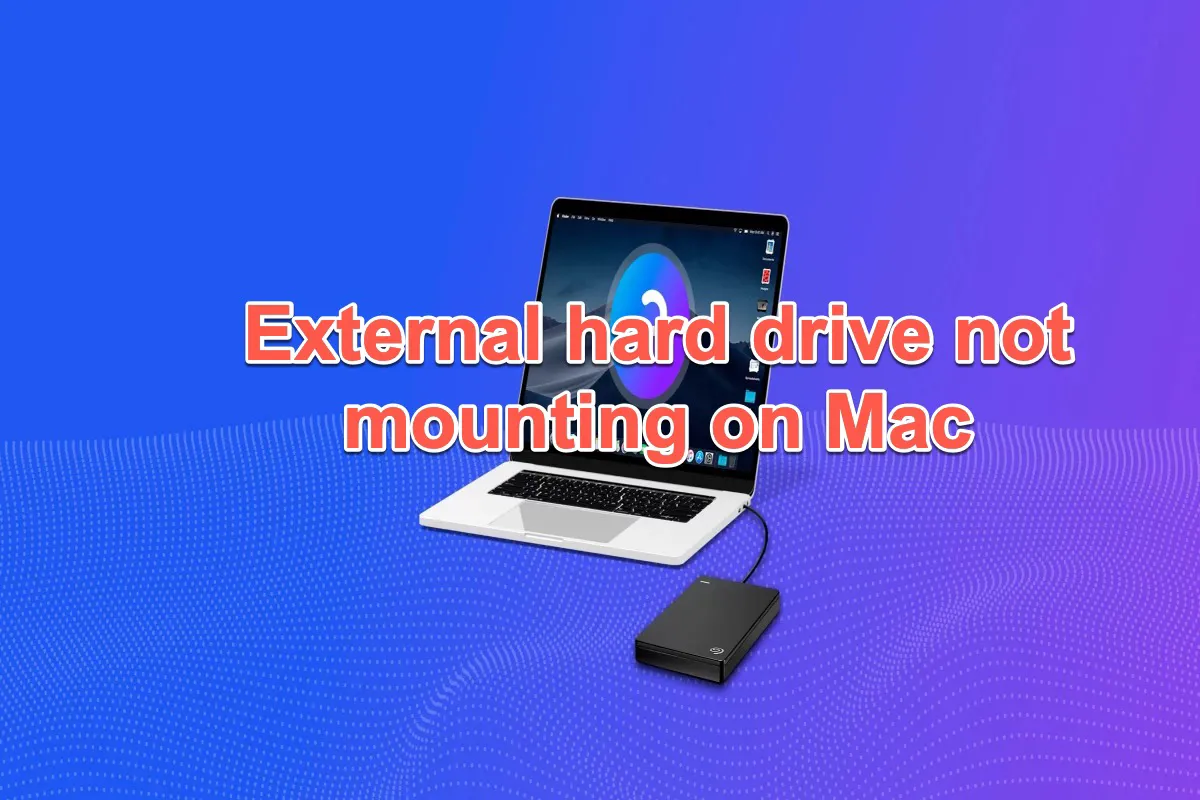Normally, when you plug in an external hard drive to Macs, you'll see it mounted on the desktop, in Finder, and Disk Utility. Then you can read, edit, copy, and delete files on the mounted external hard drive.
However, if you are unable to mount external hard drives or it reminds you of the "com.apple.DiskManagement.disenter error" message, failed with 72 error, etc, you cannot access your important data on this drive at all. The worst thing is that you don't even have any data backup when your external hard drive is unmounted.
But now you can ease your mind, On this page, you will see 8 feasible solutions that you can try to make the external hard drive mounted in macOS Sonoma/Ventura/Monterey/Big Sur/Catalina/Mojave.
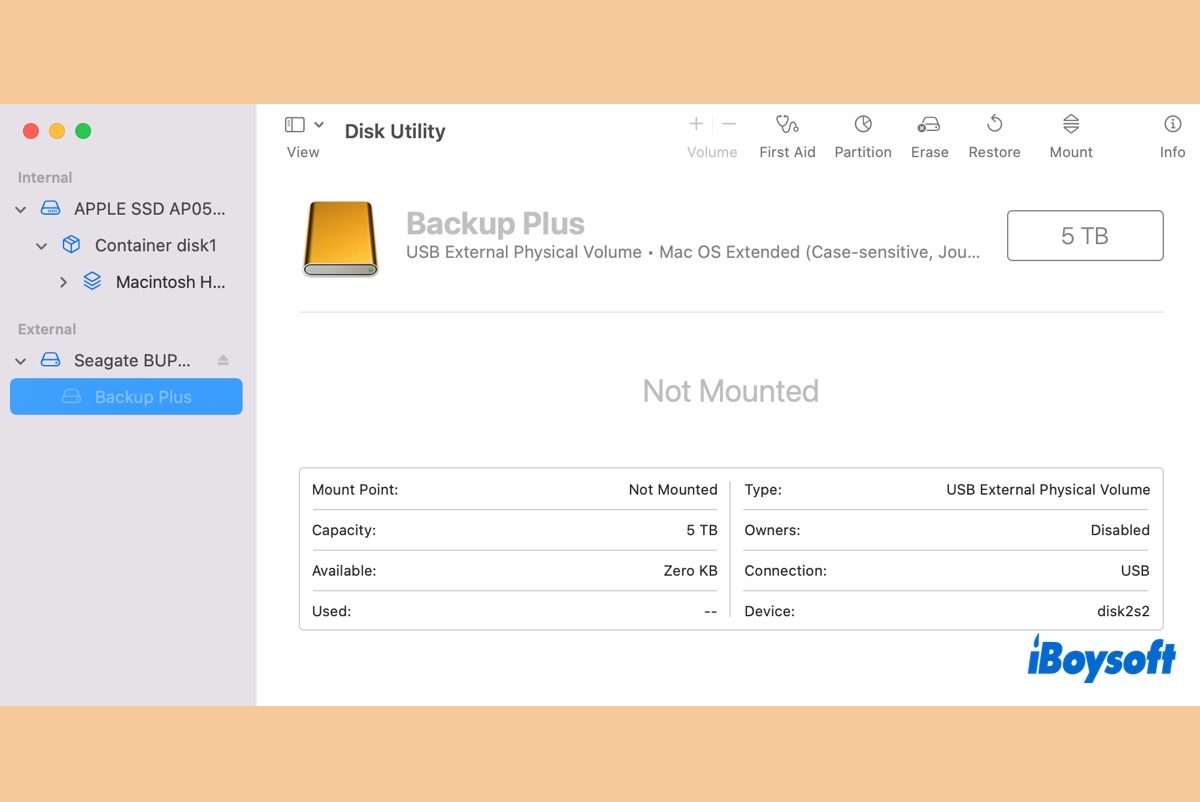
This tutorial guides you to fix the issue of the external hard drive not mounting on macOS Sequoia and help you understand the causes.
How to fix the external hard drive not mounting on the Sonoma, Ventura, Monterey, and Big Sur issues?
This post offers 8 effective ways for you to fix external hard drives not mounting, recognized, or showing up on your Mac running macOS Sonoma, Ventura, Monterey, Big Sur, Catalina, or Mojave. You can concentrate on or more to troubleshoot this annoying trouble.
Solution 1: Check if the hard drive is properly plugged in.
Since the connection between your Mac and external hard drives relies on cables, loose connections could be the cause that your external hard drive is not recognized by your Mac computer.
If the unstable connection is the case, your external hard drive would not be mounted even with a slight disturbance. Sometimes the cable itself will become hot because of a faulty connection. Therefore, you need to make sure that the connection, i.e. the USB cable, is in good condition.
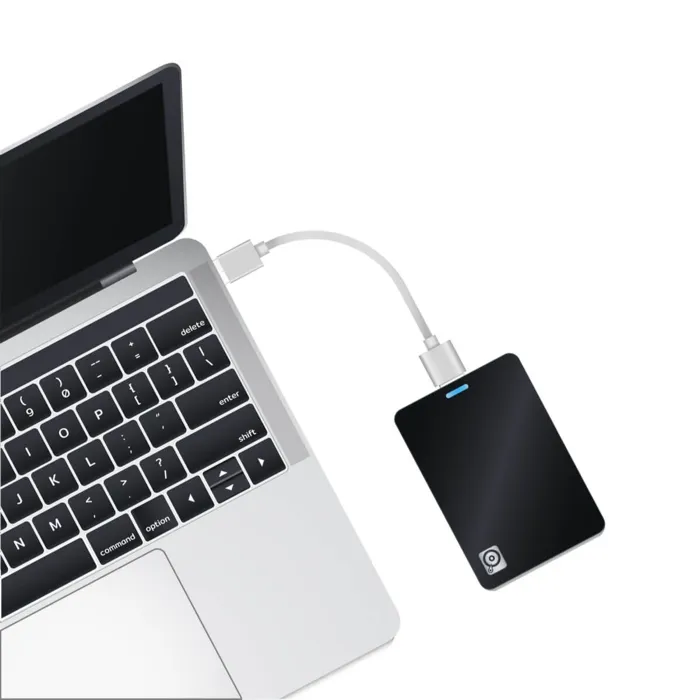
Solution 2: Check if the USB port/USB hub is unmatchable, damaged, or lacks power.
If your external hard drive or USB flash drive is not mounted on a Mac, try plugging it into another USB port or a USB hub. That's because there are USB 3.0 and USB 2.0 ports and they have some differences: USB 3.0 has a higher external hard drive not mounting in macOS Ventura/Monterey/Big Sur issue. transfer rates provide more power, more bandwidth, etc. than USB 2.0.
As you can see, insufficient power supply or damaged USB ports could also lead to external hard drives not mounting in macOS Sonoma/Ventura/Monterey/Big Sur.
To check this error, you can unplug the problematic external hard drive and plug a functional external hard drive into this USB port to see if it can be mounted normally.
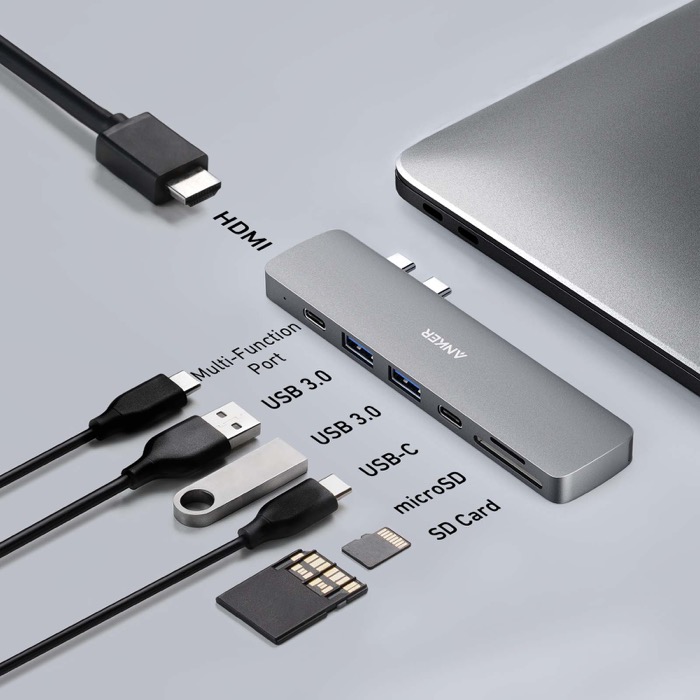
Solution 3: Check if your Mac is set to show mounted drives on the desktop.
It's also possible that your Mac has already recognized the external hard drive but not showing up on the Mac desktop or Finder.
Under such circumstances, you should go to Finder > Preferences > General and make sure the "External disks" option is ticked. Then you'll see the external hard drive mounted on the desktop.
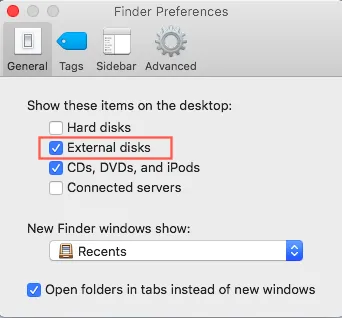
You can also set your Mac to show external hard drives in Finder > Go to Finder > Preferences > Sidebar and make sure the "External disks" option under "Locations" is ticked.
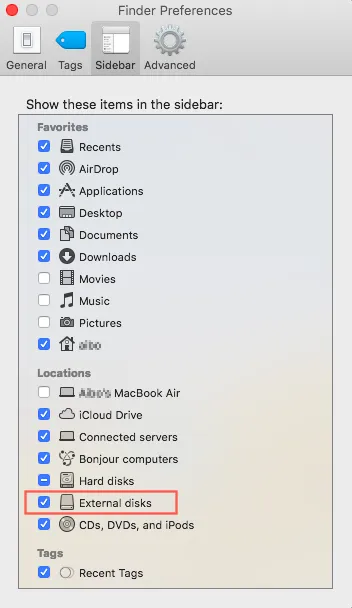
Solution 4: Check if the external hard drive is NTFS formatted.
NTFS (New Technology File System) is a proprietary file system developed by Microsoft. However, for some reason, macOS comes with read-only support for NTFS; its disabled-by-default write support for NTFS is unstable. Even though the NTFS formatted external hard drive can show up in Disk Utility, external hard drives might not be mounting as normal.
You can go to Disk Utility and check whether the file system of the external hard drive is NTFS or not, if this is the case, you can back up the files on the NTFS external hard drive and format them to Mac-supported file systems (APFS, HFS+ or HFS) or file systems supported by both Windows and Mac, like FAT32 and exFAT.
Nevertheless, the best phenomenon is that you can read and write NTFS both on Macs and Windows without fuss. So, a good NTFS for Mac application will enable you to write NTFS external hard drives on macOS without reformatting.
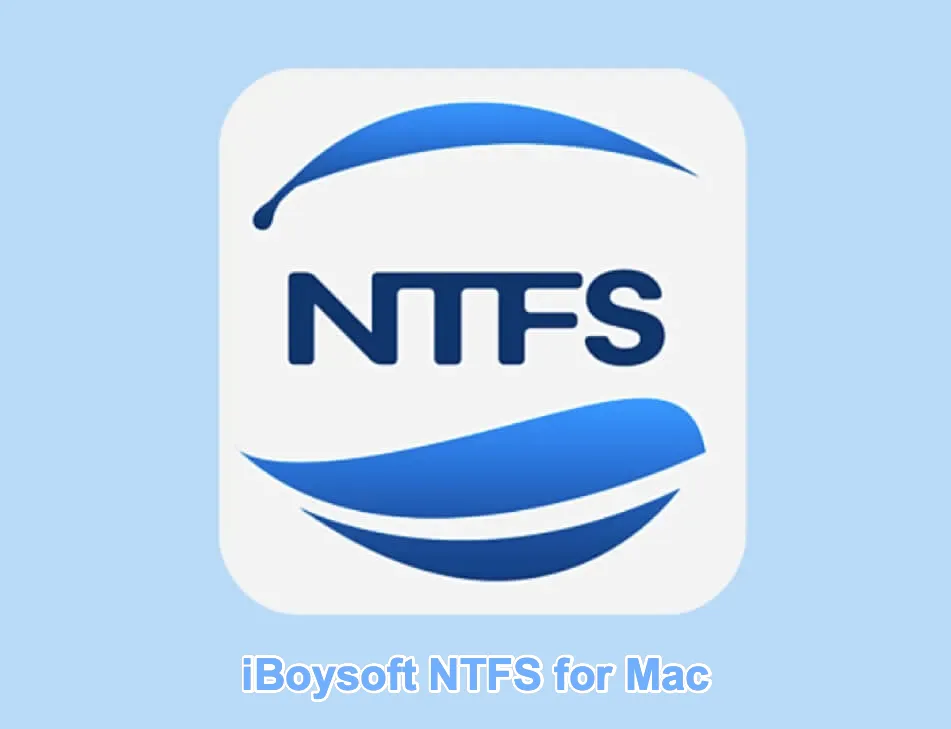
Solution 5: Check if the external hard drive is mountable in Disk Utility.
You can check if your external hard drive is mounting in Disk Utility. If your external hard drive appears there but is not mounted, you can click the Mount icon to mount the external hard drive in macOS Sonoma/ Ventura/Monterey/Big Sur.

However, if the external hard drive appears in Disk Utility but is unmountable or has no volumes of that external drive listed, you have both good news and bad news. The good news is that showing the external hard drive in Disk Utility means the drive has no hardware problem, while the bad news is that the file system of this drive probably is corrupted.
But don't worry, macOS has a built-in repair tool, called First Aid, to fix minor disk errors. You can try to fix the external hard drive not mounting issue with this useful program. Just go to Utilities > Disk Utility and click First Aid.

Solution 6: Fix the unmountable external hard drive with Terminal.
If your external hard drive can't be recognized by your Mac and First Aid failed to repair it, you can try to remount via Terminal by following the steps carefully below:
- Go to Applications > Utility > Terminal.
- Type in the diskutil list. Look for the section labeled /dev/disk_ (external, physical), and remember the disk number.
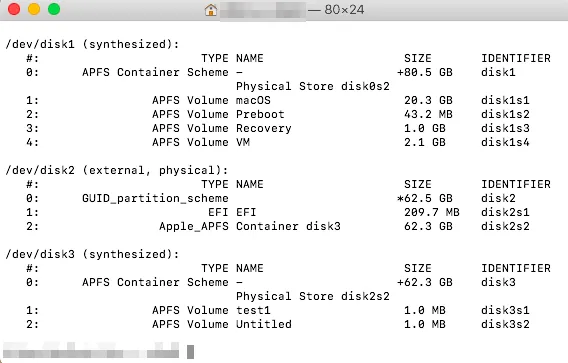
Solution 7: Check if the external hard drive is corrupted.
If unfortunately, none of the above solutions worked, the files system of the external hard drive is likely corrupted or damaged too seriously to be recognized by macOS Sonoma/Ventura/Monterey/Big Sur.
It could be the result of a file system broken, virus attacks, improper ejection, etc. If you have no important files on this drive, you can directly format the external hard drive on Mac to assign a new file system.
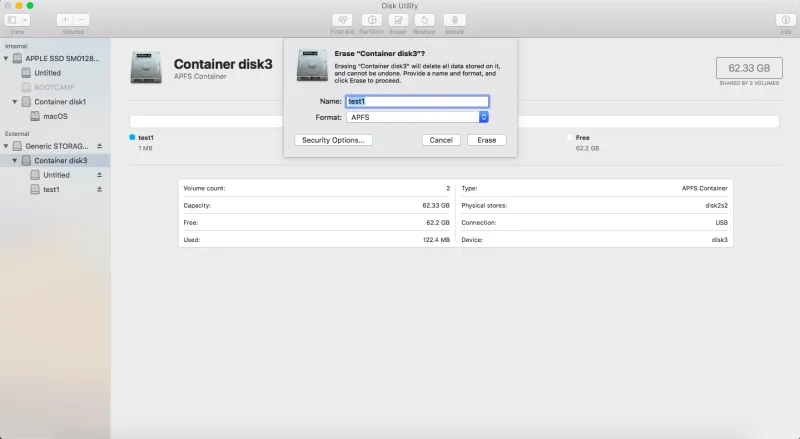
Solution 8: Recover data and reformat the unmountable external hard drive.
But what if you have invaluable data that you don't want to lose on this inaccessible external hard drive? In this case, recovering data from this drive with professional data recovery software, such as iBoysoft Mac Data Recovery, would be your final access to this unmountable external hard drive.
iBoysoft Data Recovery for Mac can recover lost data from the unmounted external hard drives in macOS Ventura/Monterey/Big Sur and earlier versions, and recover lost data from corrupted, unreadable, formatted, and failing external APFS drives with ease.
Step 1: Download and install iBoysoft Data Recovery for Mac on your computer For the first-time installation, you need to allow Full Disk Access on Mac and enable system extensions on Mac for the software if your Mac is running macOS 10.13 or later.
If you run macOS 14 Sonoma, a step to enable third-party extension on macOS Sonoma is indispensable as well.
Step 2: Launch this program to select the unmountable hard drive and click Search the Lost Data. The program will start scanning this drive for lost files.
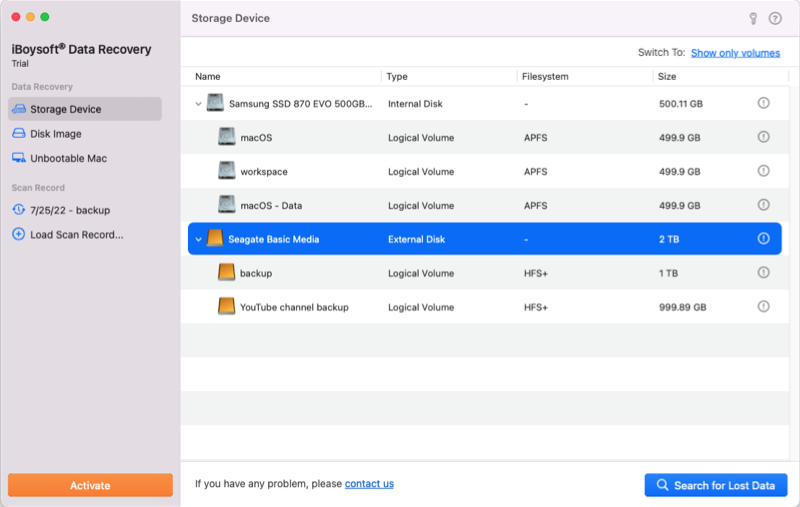
Step 3: After the scanning process finishes, you can click Preview to overview the found files and preview them.
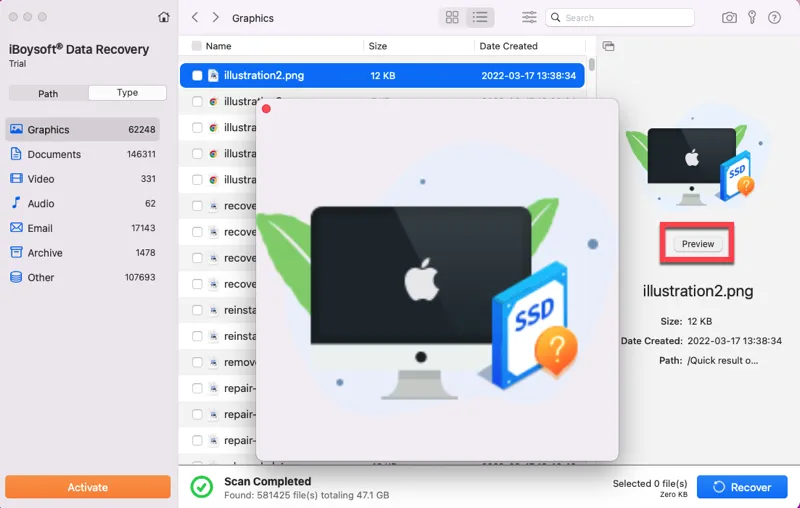
Step 4: Choose what you want to get back and click Recover.
Step 5: Go through the recovered files and make sure your desired files are recovered from this external hard drive successfully. Do not save the recovery results to the same partition or drive that you scanned to avoid further data loss.
If, unfortunately, your data is lost from an external hard drive in macOS Sonoma/Ventura/Monterey/Big Sur, whether the disk was formatted accidentally or files were deleted mistakenly, you can recover lost data from an unmountable hard drive with iBoysoft Data Recovery for Mac.
But compared with data recovery software, the best way to escape from data loss is to back up your files regularly.
Why not share this article to help more people if you successfully get all the files back?
macOS Sonoma on M1/M2 can't mount encrypted HFS+ drives, how to fix it?
I have an external USB 3.0 hard drive (the rotating variant) formatted with HFS+ and encrypted via Core Storage. Plugging the drive into my M1 Mac Mini running macos Sonoma (14.0) could not mount the encrypted HFS+ partition. Disk Utility shows the partition as "unformatted."
Nevertheless, I've plugged the same drive on an Intel Mac running Sonoma (also 14.0) and it mounted the HFS+ encrypted partition just fine. I was really in a dazz and had no idea on what's going on, can anyone tell me why did this trouble happen and how can I make my M1 recognize and mount my encrypted HFS+ drive?
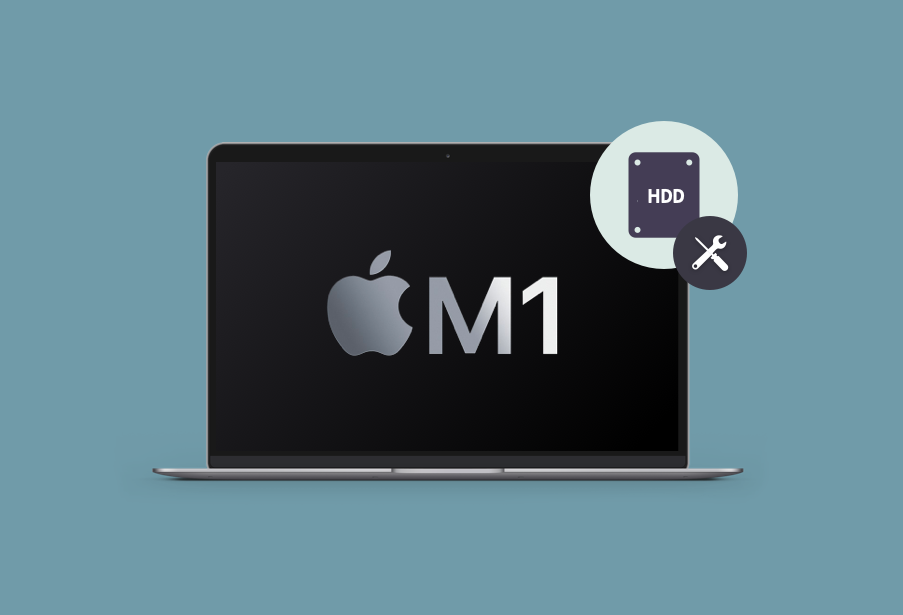
As we all know, HFS+ is more suitable for HDD while APFS works better on Flash NAND storage like an SSD or NVMe drive. Followingly, Apple removed HFS+ since macOS Monterey on its M1 and M2 lineups, and HFS+ has only remained for Disk Image. Apparently, Apple doesn't want people to use it, although HFS+ performs better on HDD than SSD.
That trend possibly leaves a gap between the new-coming macOS Sonoma and HFS+ file system, resulting in M1 with macOS Sonoma installed neither recognizing nor mounting the HFS+ encrypted drive.
The good news is that Apple has fixed this issue with the release of macOS 14.1, you can update macOS Sonoma to a recent or latest version for troubleshooting it.
If you manage to fix the trouble that M1 with macOS Sonoma can't recognize or mount an HFS+ encrypted drive, please share this article to help more people!
Read more about Mounting a disk
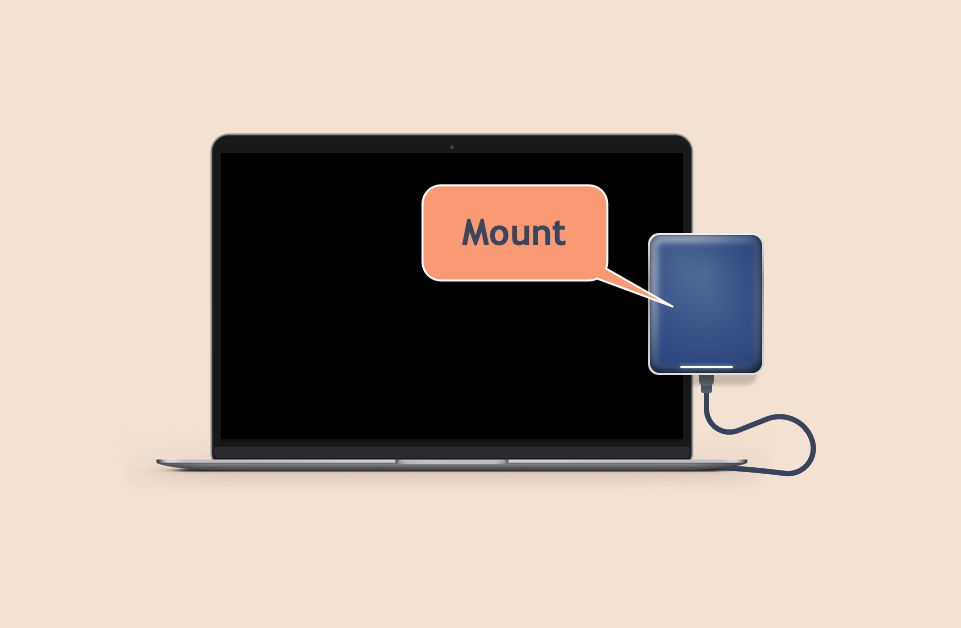
Mounting a hard disk makes it accessible by the computer, and this is a software process that "activates" the disk, which makes the folders and files on the disk readable by the computer. If a hard drive is physically connected, but not mounted, the computer will not recognize it.
Even though most operating systems, such as macOS, will mount newly connected disks by default, you still can't avoid accidental problems since the hard drive is connected via cables, USB ports, etc. after all, which is quite different from the internal ones.
To fix the external hard drive not mounting on Mac issue, you need to exclude the errors one by one to get it fixed. Remember to safely unmount the external disk before ejection to avoid possible file data corruption.
Read Also:
NTFS External Hard Drives Not Mounting/Working on Mac (Sonoma/Ventura)
